Our parking slot at the Waitrose was due to expire at 9am so we had told Erin we’d head ack to the car park at 8.45. Neil and I ate breakfast early and had a little time up our sleeves, so I went for a little walk over to the Cathedral green and down to the market square where the vendors were setting up for the weekly Saturday market.
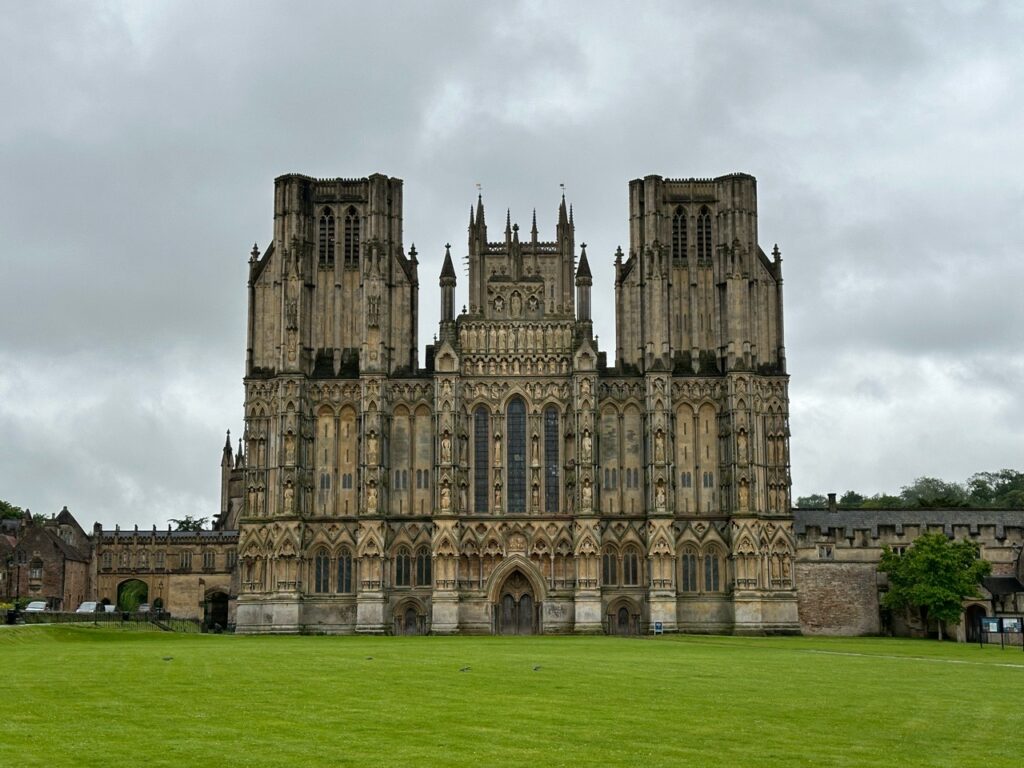
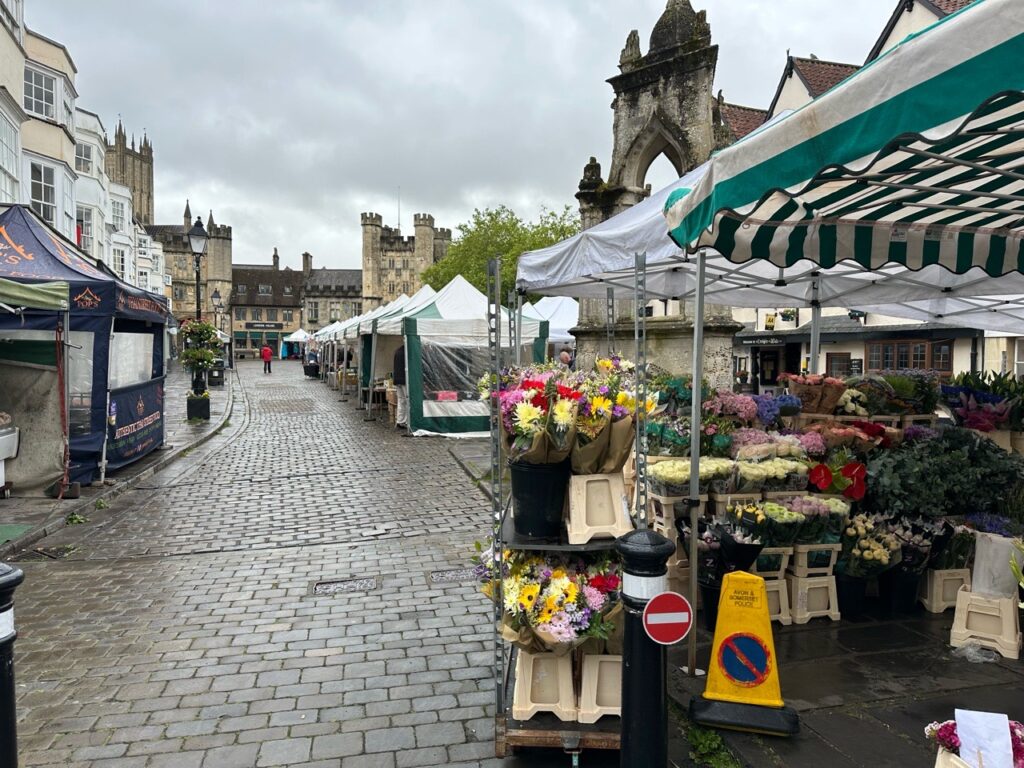
When I returned to the hotel I could see there were some vacant spots and so Neil and decided to walk back to the Waitrose and collect the car to bring back to the hotel rather than have to trundle our bags through the town again. A quick text to Erin to let her know and then we were on our way towards Bristol, where we were going to drop Erin at the station for a quick train back to London.
Our route to Bristol took us through Cheddar Gorge, which is a popular location for walkers and for those interested in visiting the Cheddar cheese shops and the museums in the gorge that house some of the remains of the prehistoric peoples who frequented the area. Nothing was open yet as we drove through so we just admired the gorge and the sheep who also frequent the area!
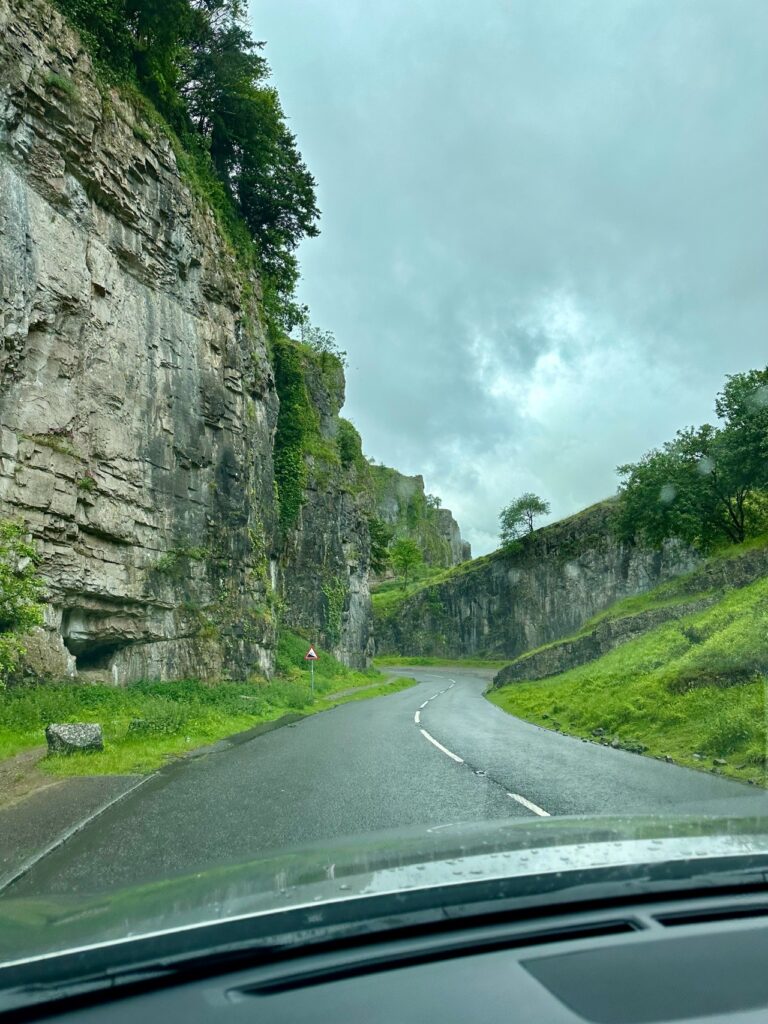
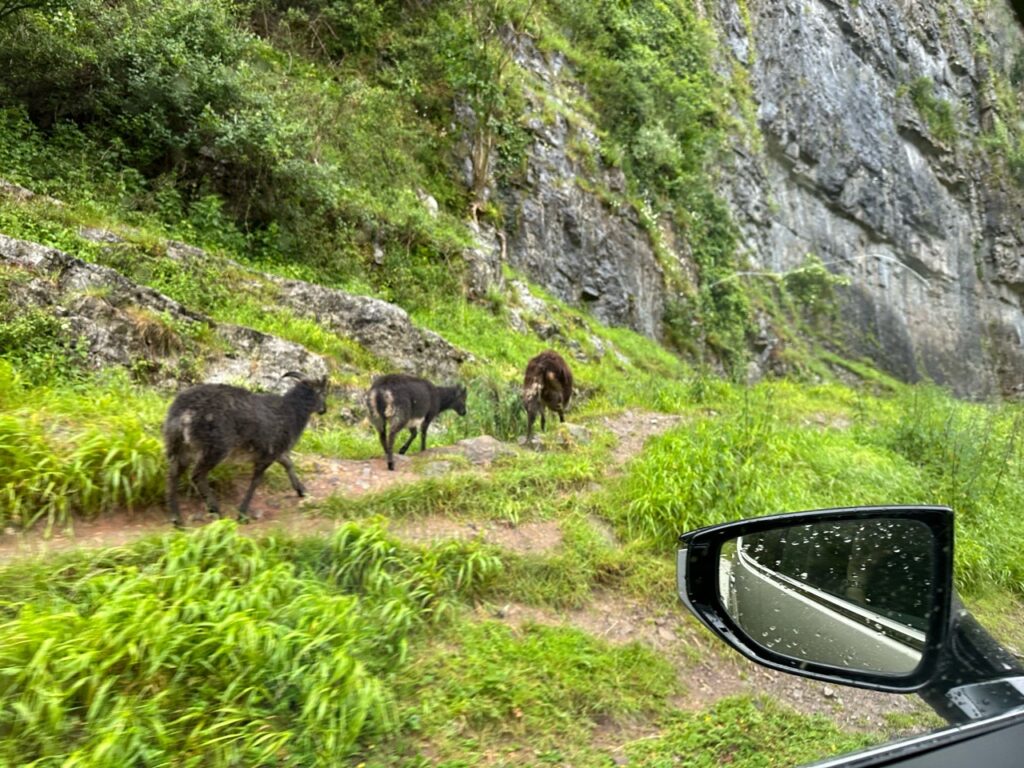
The weather was a bit showery for the remainder of the drive to Bristol but the sun came out as we arrived at the station. It was sad to say goodbye to Erin, she has been wonderful company for the last week and we’ve had so much fun. However, she needs to head back home on Monday and had a few more days to catch up with her friends and Andrew’s sister and brother-in-law and their twin babies. So we hugged and waved goodbye and set off out of Bristol to cross the Severn Bridge into Wales.
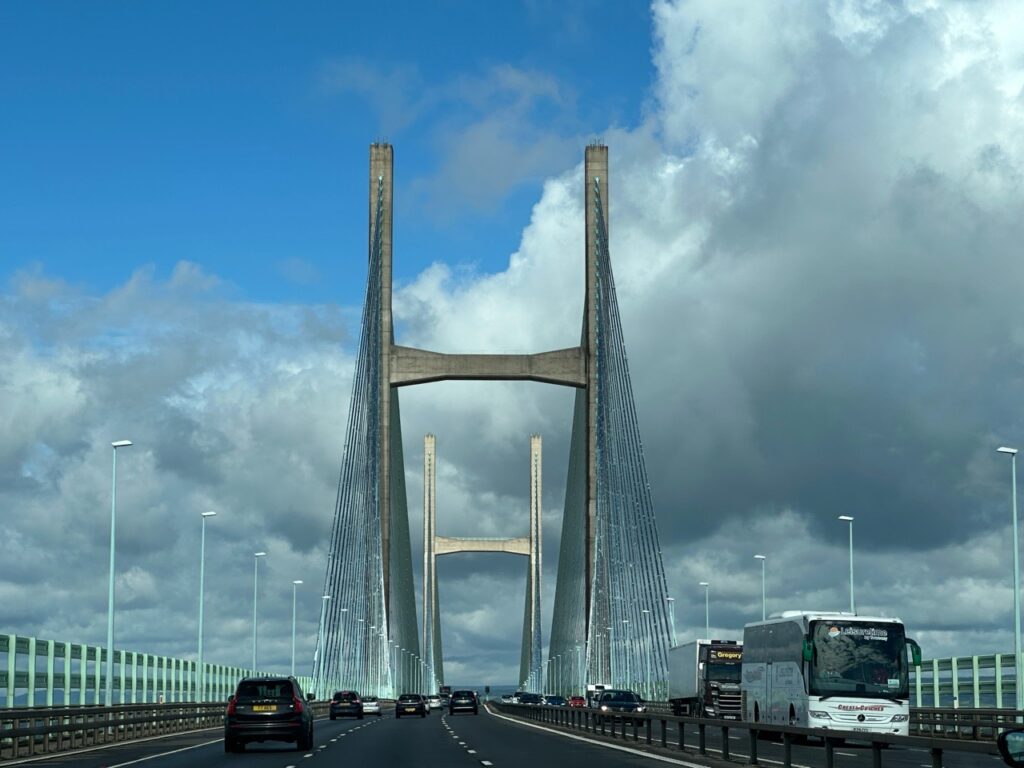
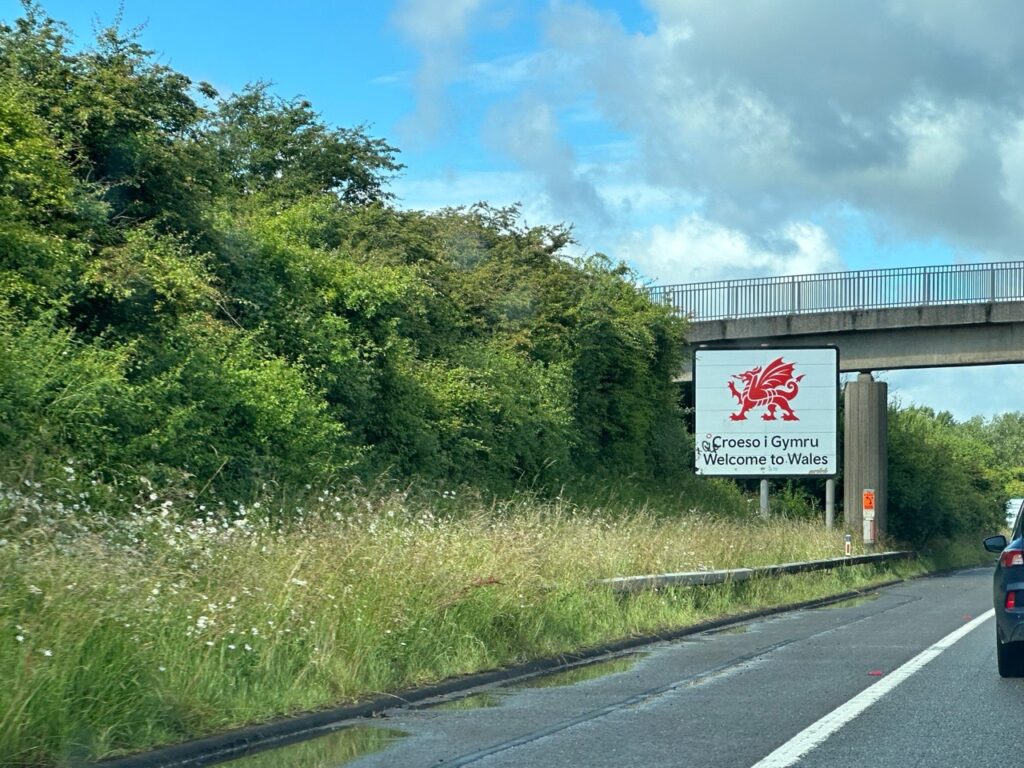
Our first stop, not far across the border was the National Roman Legion Museum in Caerleon. Around AD75, Roman settlers built the mighty fortress of Isca Augusta in what is now Caerleon. One of only three permanent fortresses in Roman Britain, it housed a 5000-strong force of the Second Augustan Legion, and defended the furthest outpost of their empire for two centuries. First we stepped out into a large field near the centre of the town to see the largest surviving Roman Ampitheatre in Britain and then visited the museum to see the exhibits and their replica of a Roman garden.
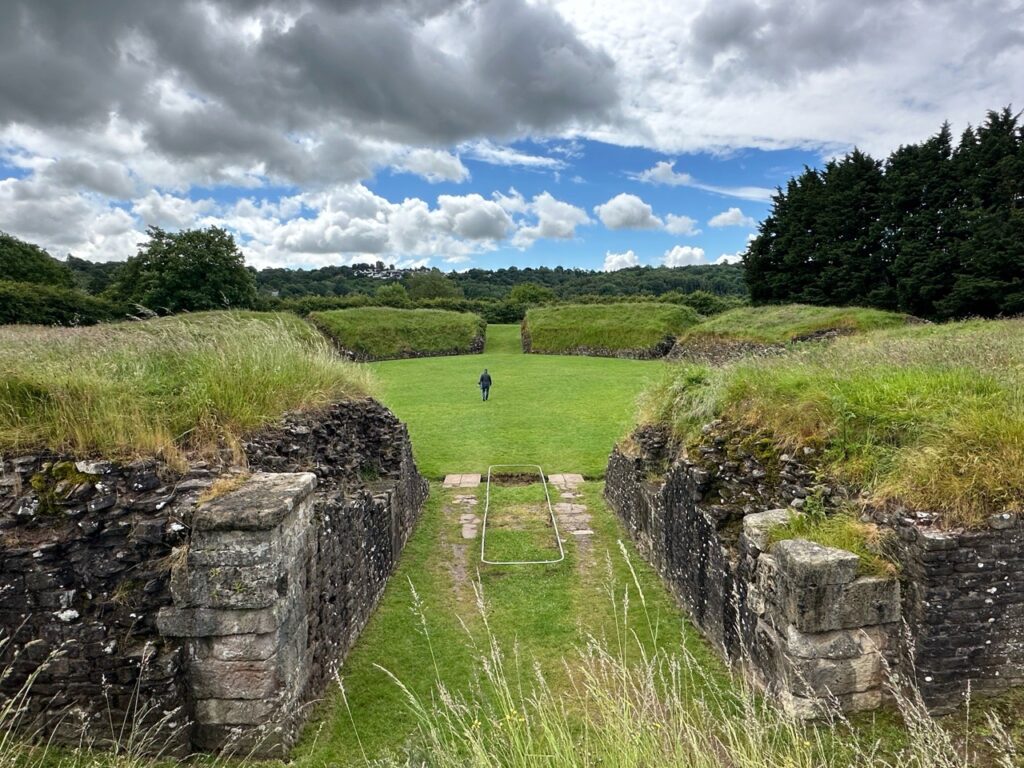
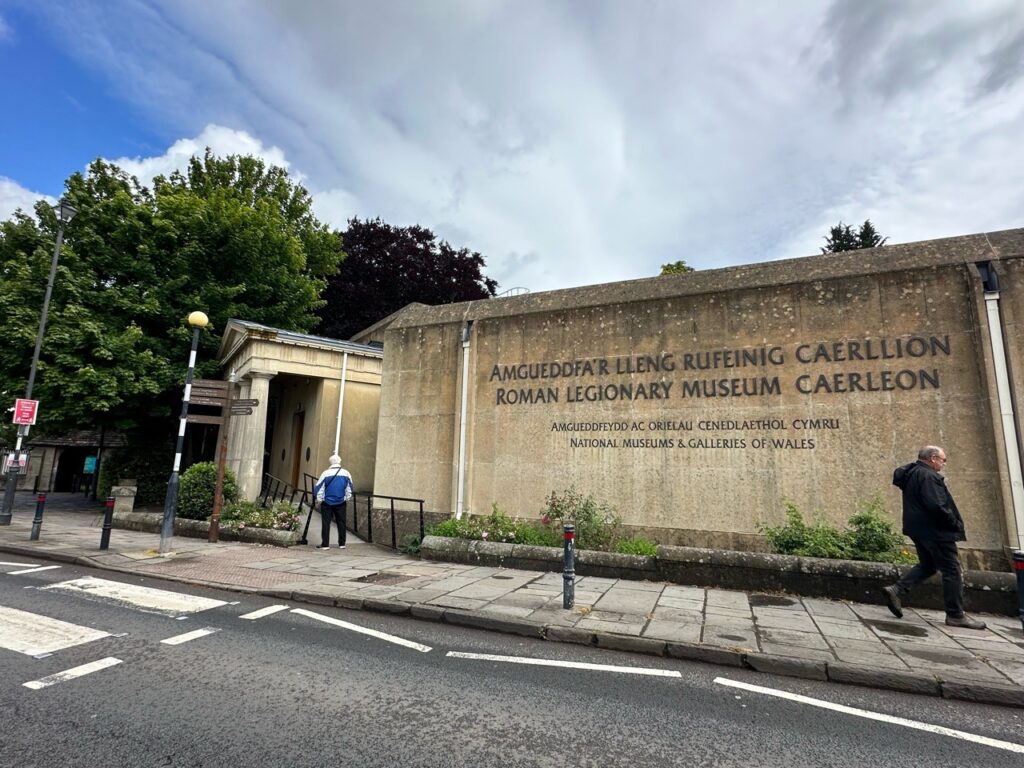
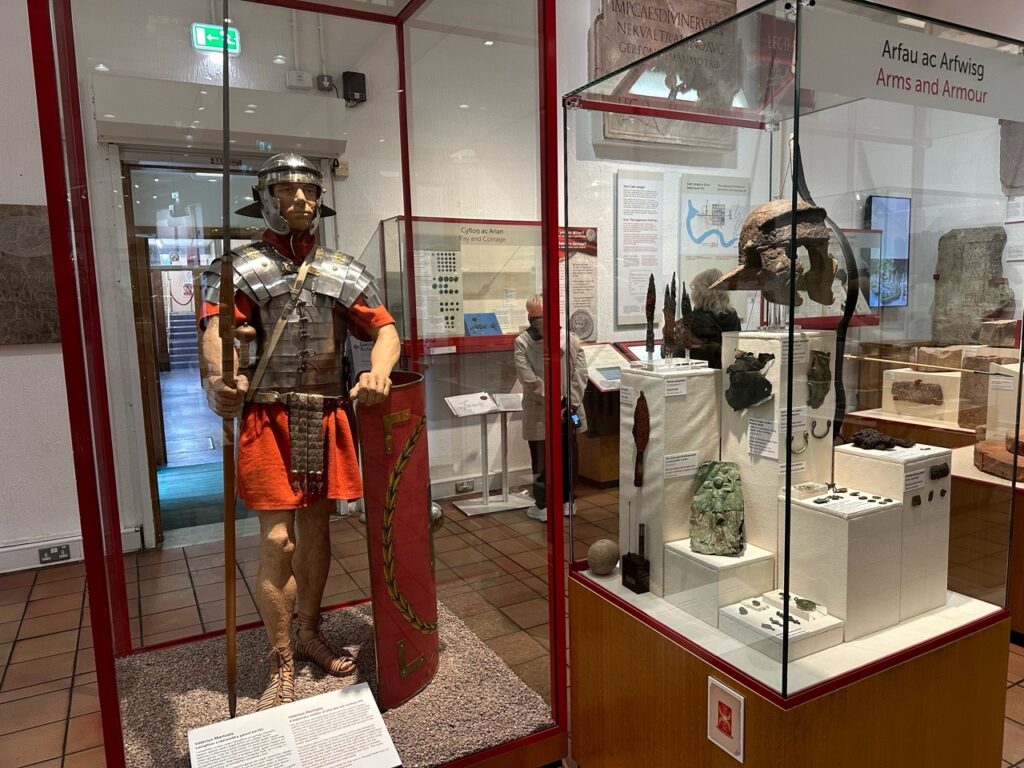
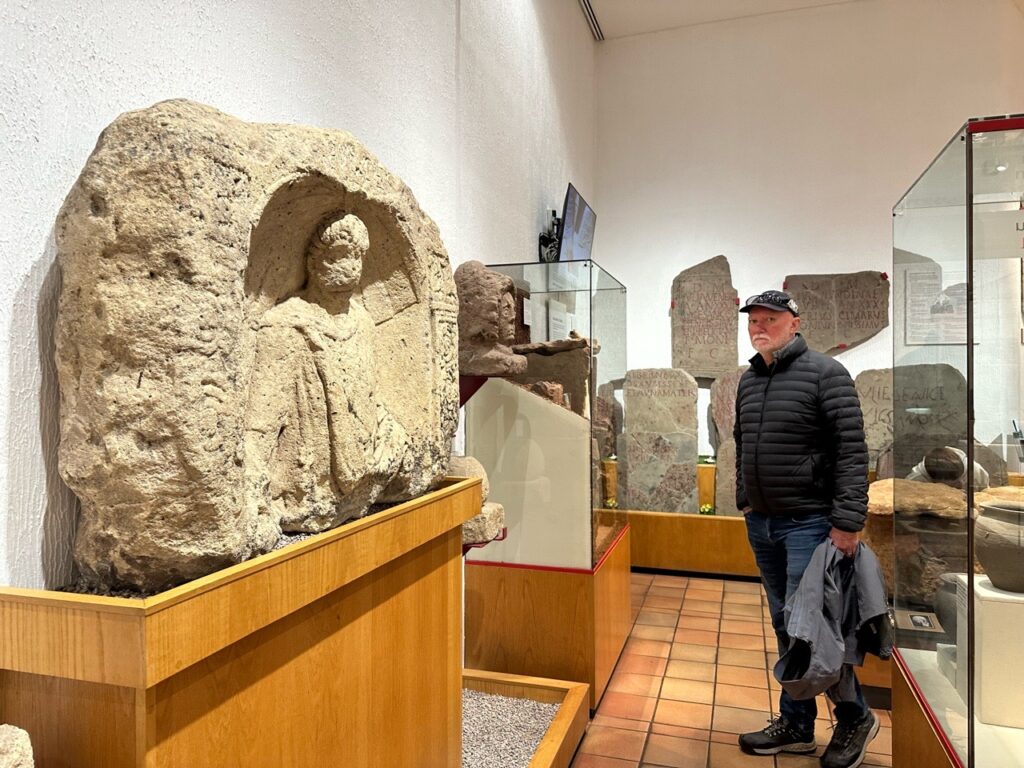
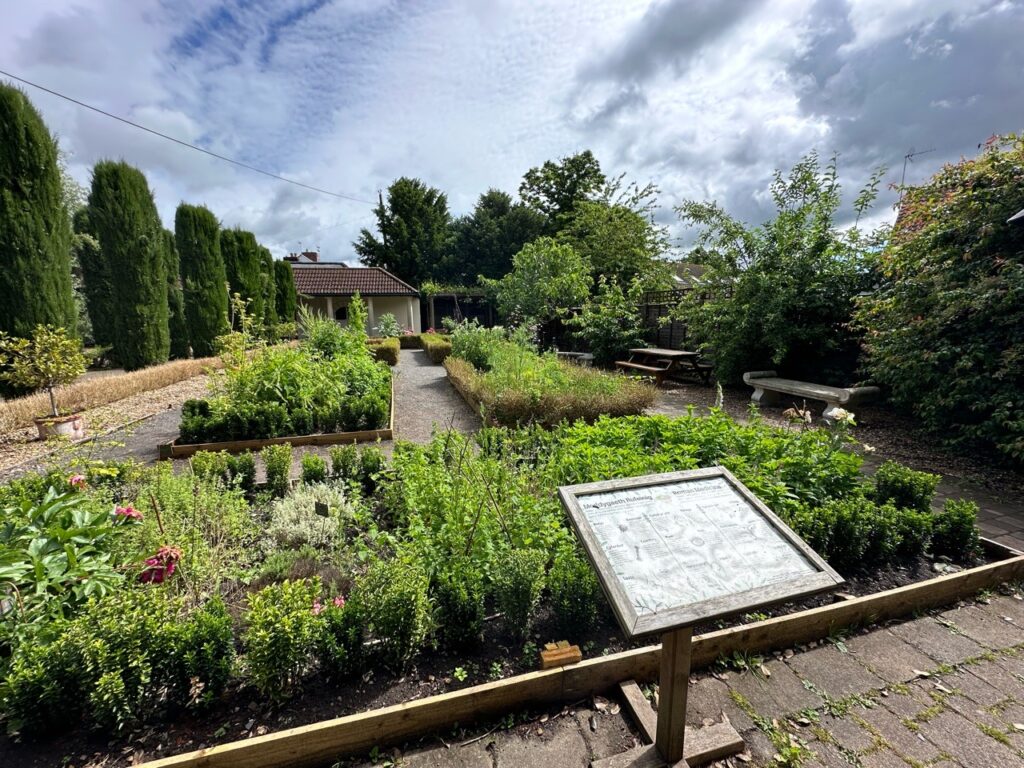
We didn’t have very far to go from Caerleon to the capital city of Wales, Cardiff. We parked in a central parking lot with VERY tight ramps and spaces and walked up the streets to Cardiff Castle, which is right in the centre of the city.
The history of the castle goes back 2000 years. Originally the site of a Roman fort, the original castle keep was established by William the Conqueror. The Castle passed through the hands of many noble families until in 1766, it passed by marriage to the Bute family. The 2nd Marquess of Bute was responsible for turning Cardiff into the world’s greatest coal exporting port. The Castle and Bute fortune passed to his son John, the 3rd Marquess of Bute, who by the 1860s was reputed to be the richest man in the world. This generation were responsible for major renovations to the castle, adding wildly exotic Victorian interiors and changing the exterior to Gothic Revival. The first part of our visit took us down to see the last remaining sections of Roman walls and an enormous carved wooden panel depicting Roman life.
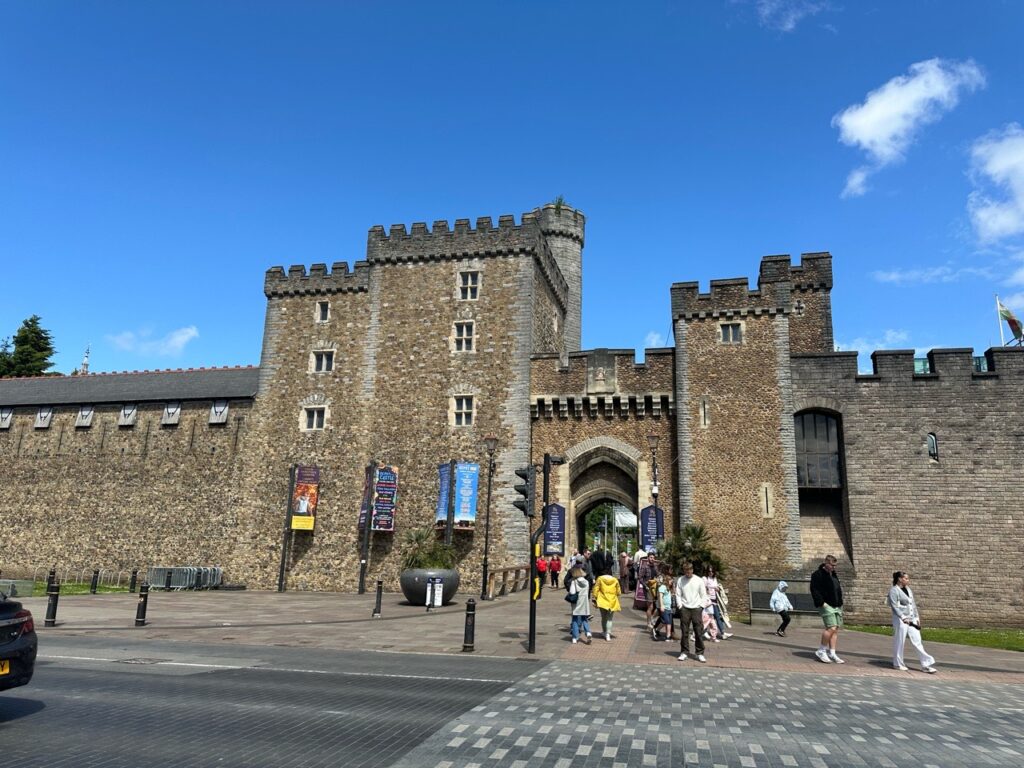
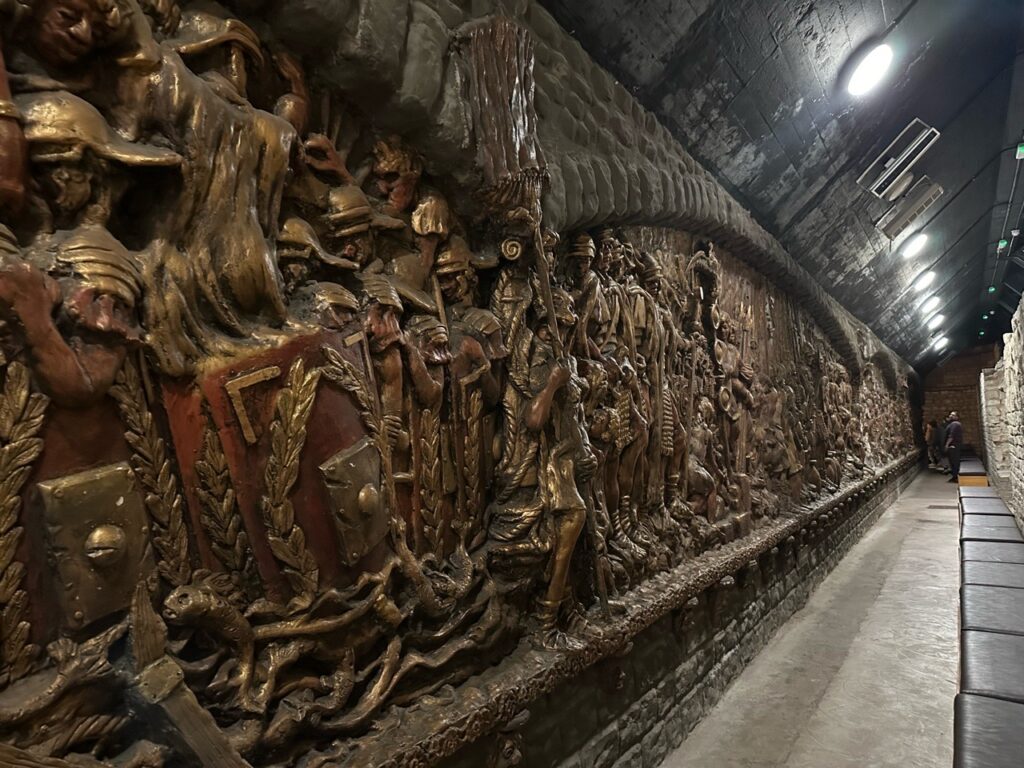
In the same area was an exhibit called The Firing Line, which showcases the history of Wales Military regiments in many wars. We were tickled to find 7 of the VC medals that had been awarded to the soldiers at Rorke’s drift. The medal, belonging to John Chard, is on display in the Imperial War Museum in London.
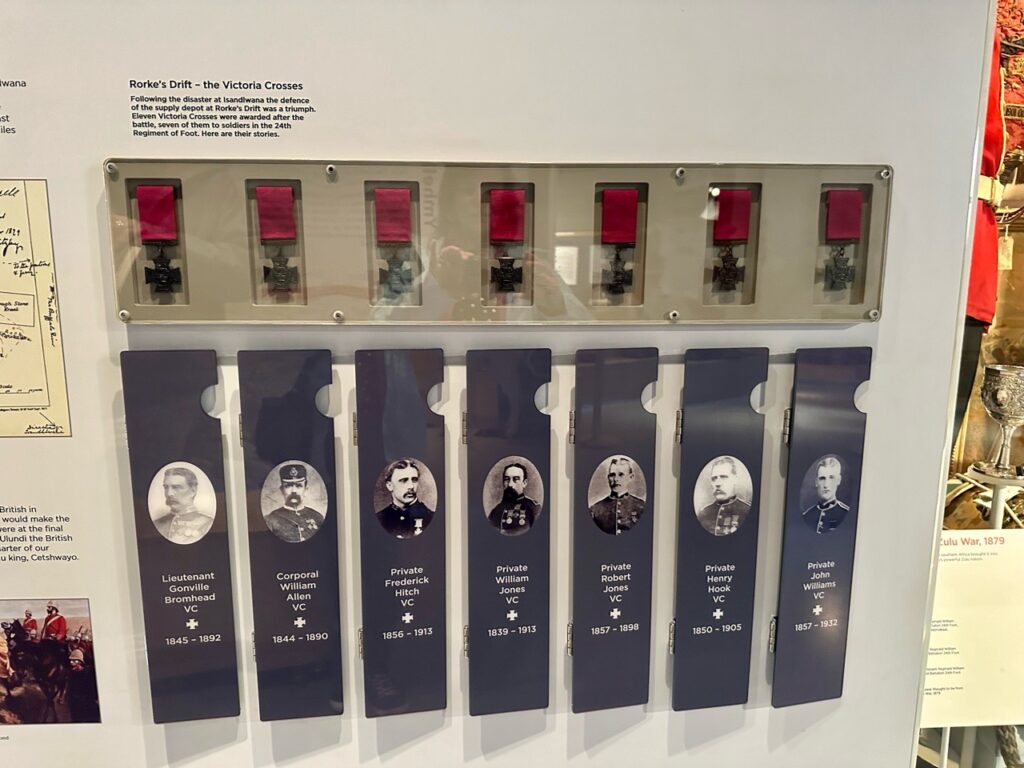
Back up in the main open space before the keep we realised that we weren’t going to get the full effect of the space, as a large stage had been erected with enclosed areas, outdoor bars and portaloos! They were setting up for a big concert to be performed there next weekend. However we could still head into the main residential area of the castle to see the outrageously decorated Victorian stately rooms.
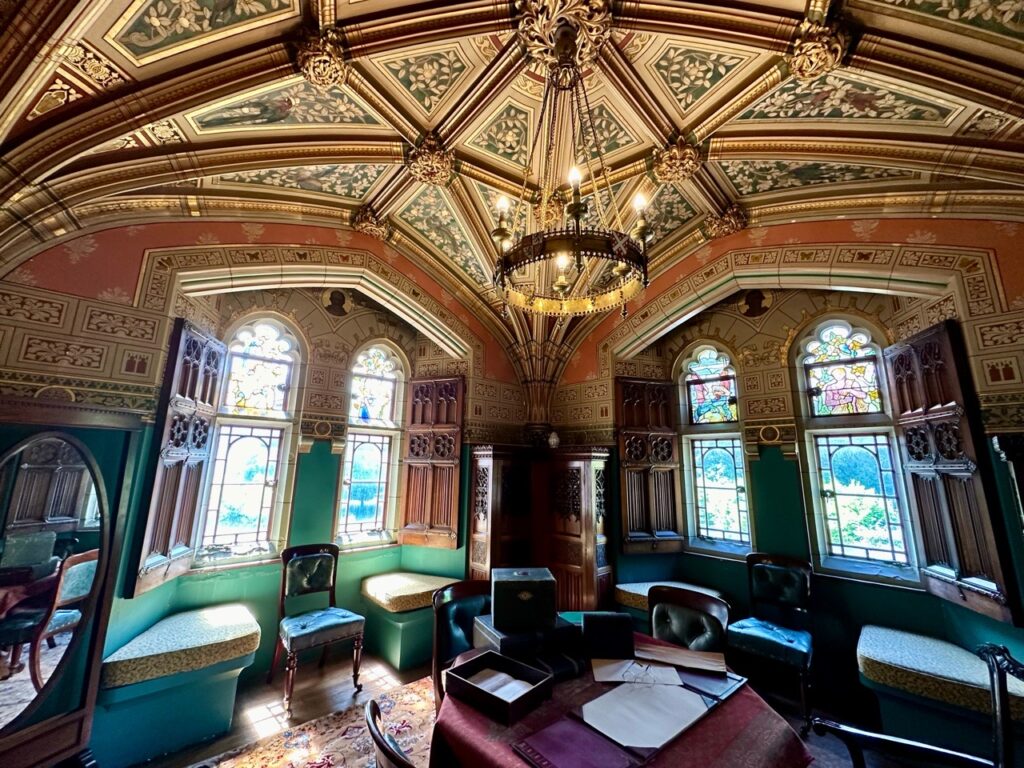
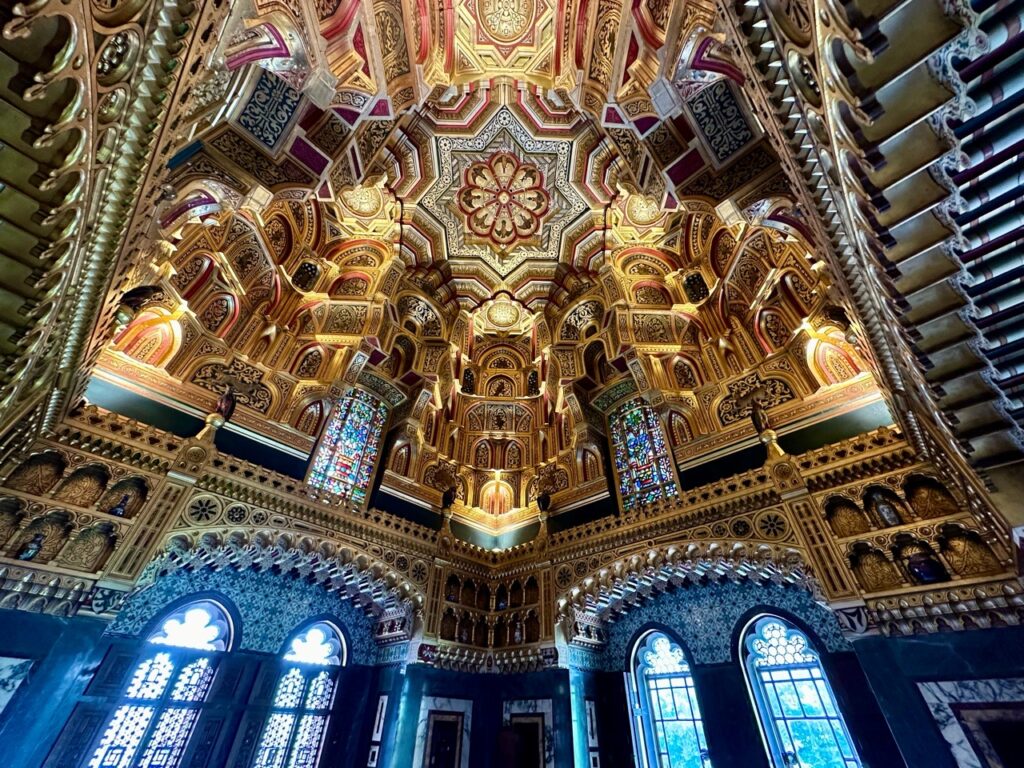
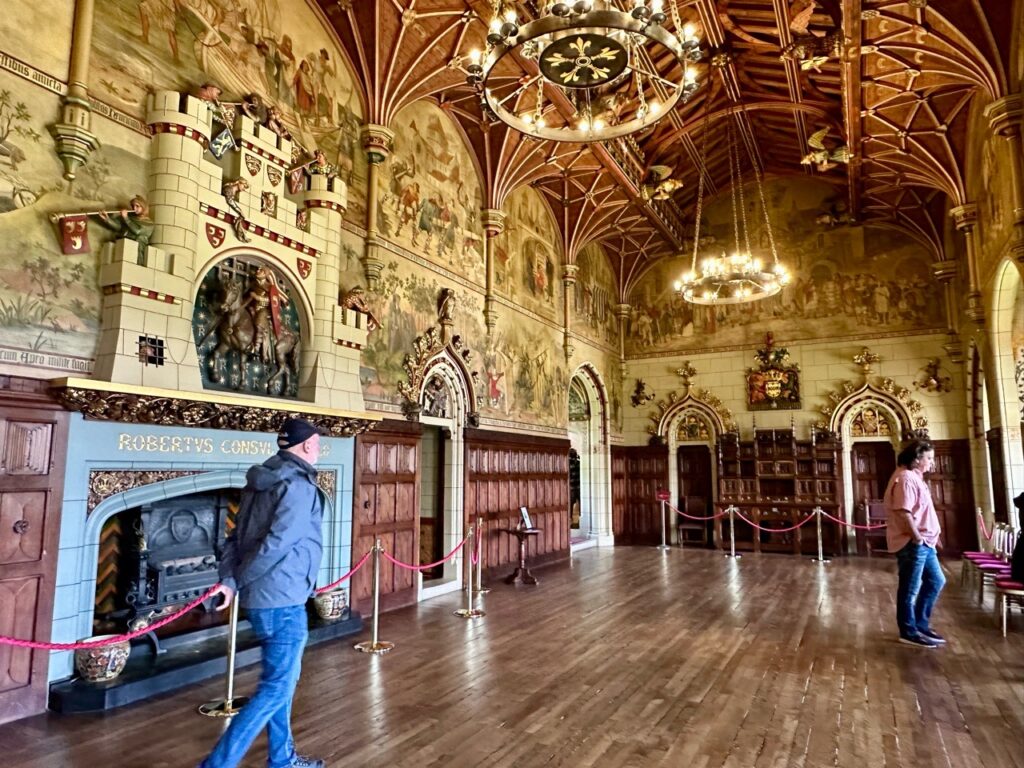
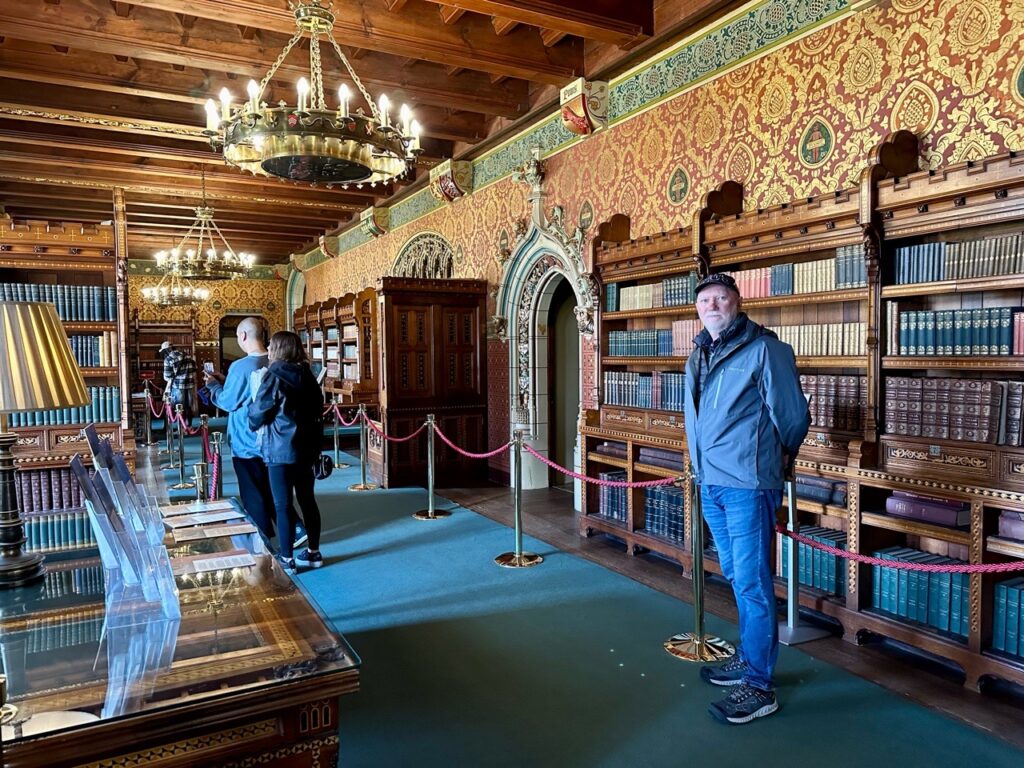
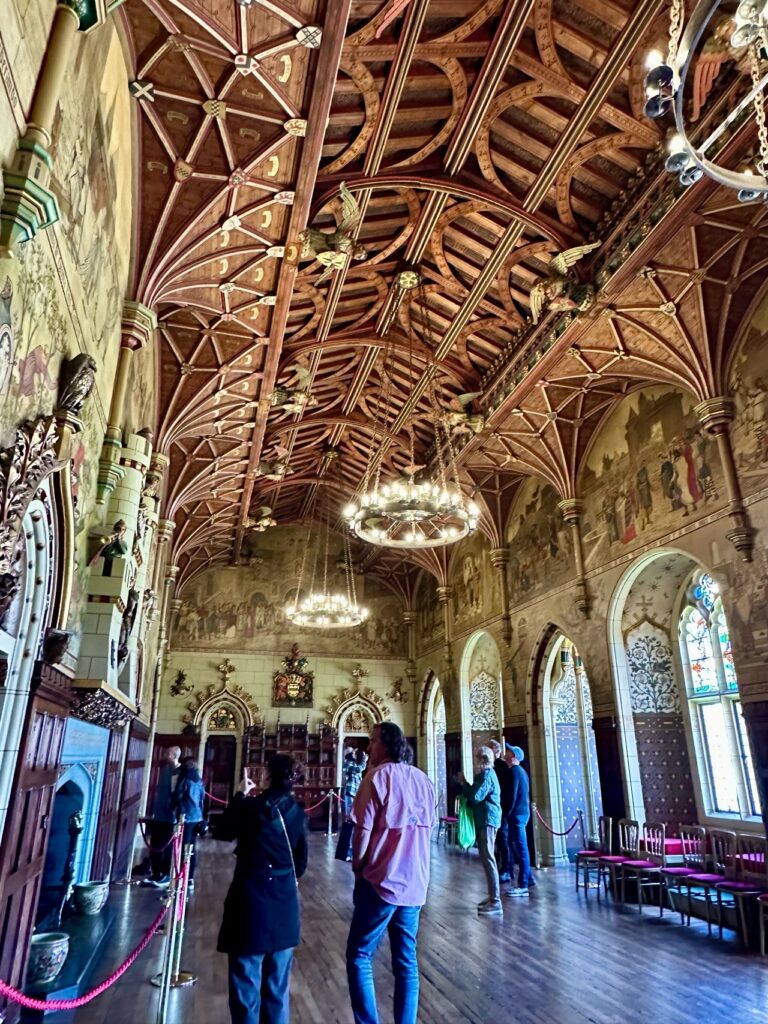
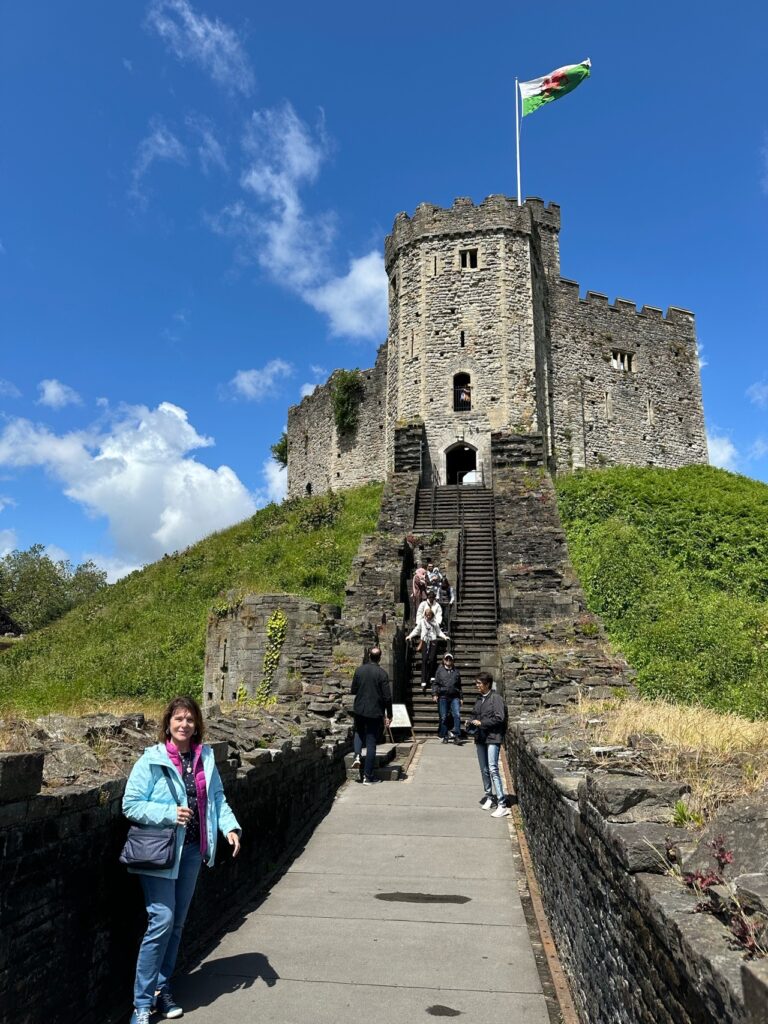
Back outside we climbed up into the original Norman keep with its great view across the city. We also walked through the dark tunnels in the castle walls that were used as shelters during WWII.
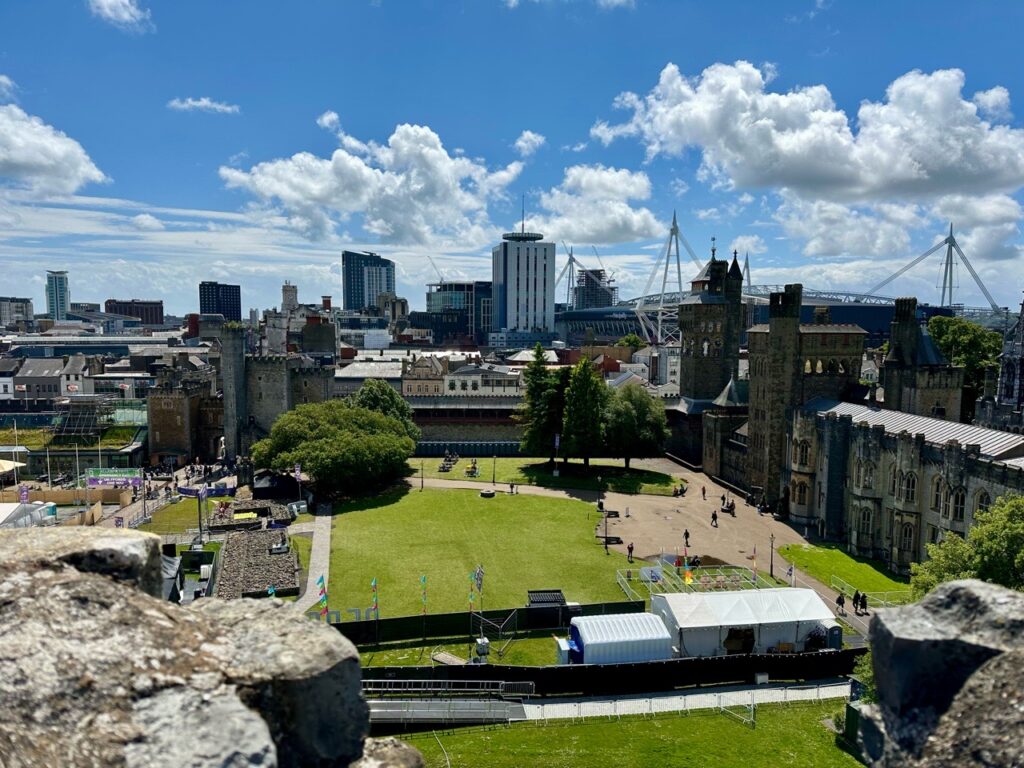
We were ready for lunch by now so when we left he castle we stopped in one of the cafes in the nearby Castle Arcade. It reminded me a little of the Strand Arcade back home but not so decorative.
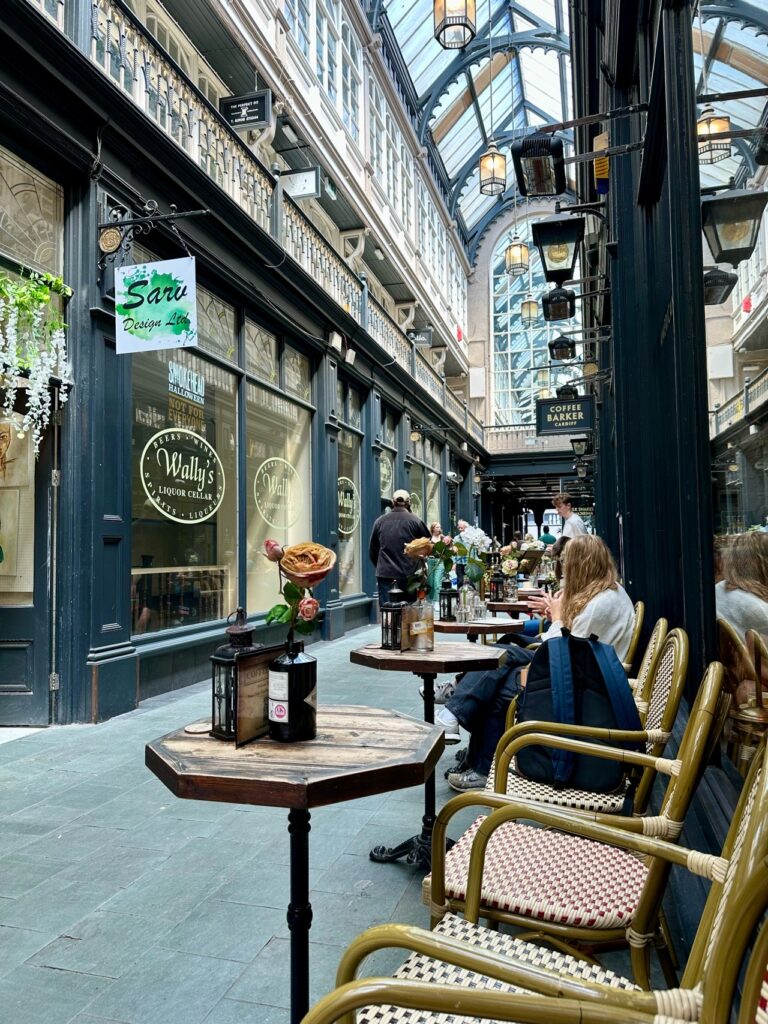
Back on the road our next “destination” was the A4069 road over the Brecon Beacons National Park near Black Mountain. I’d included this road on our route as I’d read some great reviews.e.g. “This route has become very popular since it was featured on Top Gear back in 2011 – so much so that it has now been dubbed the Top Gear road. This swooping mountain pass has become a firm favourite with car magazine test drivers, bikers, motorists, and the odd kamikaze sheep.”
So we approached it with some anticipation. Unfortunately the weather by now was grey and drizzly, so we didn’t get the best of the views. It was a nice drive, but to be honest, I didn’t think it lived up to the hype. As I said to Neil on the road down “This is no Stelvio Pass!” ( an amazing mountain road we drove in Italy, and also populate with the Top Gear team) However, we did see lots of sheep so I guess that was a fair assessment .
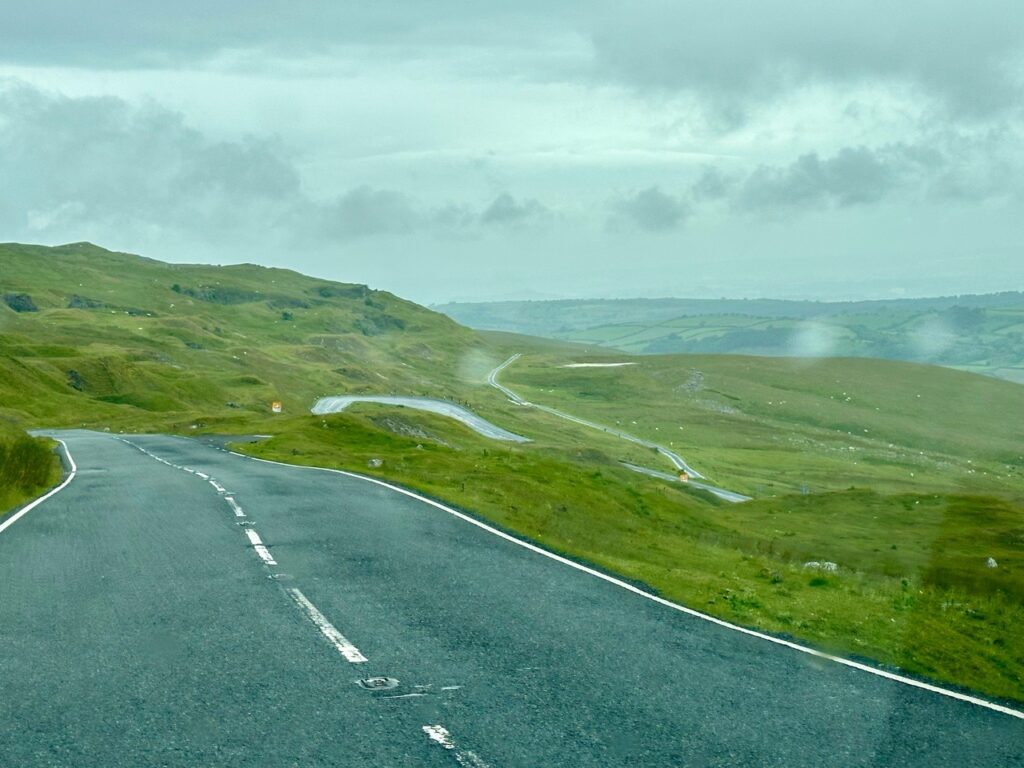
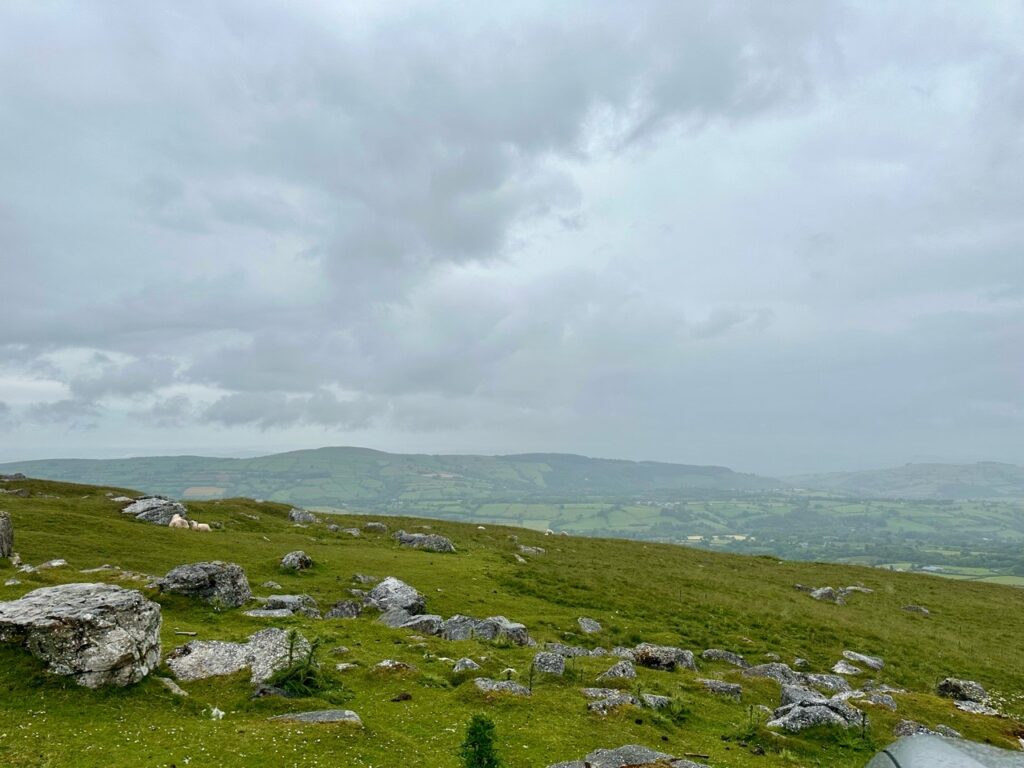
Not much further along the road we arrived at our accommodation in Llandeilo. I’d booked us into a self contained cottage in the quiet back streets of the town, it’s very comfortable and has a pretty outdoor terrace which is too wet to use tonight. We’d stopped in a Tesco along the road to buy provisions for breakfast and dinner, sometimes it’s nice on a long trip to just do your own thing. The other advantage of the house is it has a laundry so we can catch up on our washing! Tomorrow we explore the Gower Peninsula.


